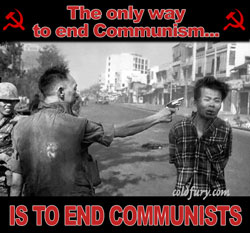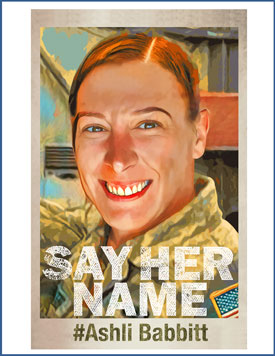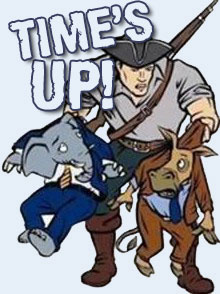If you’ve noticed that what the people Salena Zito calls “our cultural narrative-makers” are reporting is quite often at odds with your own daily meatspace reality, particularly life as she is lived in small-town and rural America, well, it ain’t just your imagination. Since this is a relatively short piece and there’s no way to do it justice with some niggardly copy ‘n’ pastery, I’m just gonna repost the whole thing, with my apologies to Ms Zito and the good folks at American Greatness for the misappropriation. It’s an important story she’s telling, I think, and deserves to be brought before as wide an audience as possible.
Seeing America from the Ground
OTTAWA, Ohio—This is not a story about politics. Instead, it is a story about America and how sometimes, you can discover something new when you try to absorb the country’s character one mile at a time and when you take in a place on its own terms and not simply the terms of wherever you came from.A couple of weeks ago, a native Long Islander who has called New York City his home for half a dozen years took his first trip to the Midwest for a news assignment to discuss what he found different about the way of life out here.
He flew to both Chicago and Detroit to learn about this foreign land.
The social media criticism of the resulting story was swift and brutal. The piece wasn’t any worse than the typical story flyover country folk read about themselves. But the oddest thing was that he tried to find the “Midwest” solely in the big cities of Chicago and Detroit. The true measure of the Midwest begins somewhere near the Pennsylvania state line.
Had he driven the 21 hours and 18 minutes it would take on the back roads between New York City and Chicago, he would have had one heck of a story to write about the country and the Midwest.
Jim Thorpe, Pennsylvania, is a beautiful town surrounded by the mountains of Pisgah Ridge and is dotted with architectural styles that range from Federalist, Greek Revival, Romanesque Revival, and Queen Anne to Richardsonian Romanesque. How the former town of Mauch Chunk was renamed for the Native American sports legend is, in microcosm, the story of this town: the ingenuity of civic leaders who deeply care about preserving a place in a changing world.
Then, at the Ohio-Pennsylvania border, by some measures the official threshold of the Midwest, he would have found himself in Ashtabula, Ohio. There, he could have begun his education as to how the Great Lakes Midwest has struggled and adapted to the tides of progress and technology that have stripped it from its robust industrial past as a major port city and railroad hub.
Deep poverty, crime, and despair, associated with the collapsed inner-city neighborhoods of Chicago and Detroit, would have greeted him in a different form had he driven down Lincoln Highway and found himself in Ford Heights, Illinois. Once a blue-collar, middle-class black suburb, Ford Heights has died so hard, it has been consistently the poorest suburb in America since the beginning of this century.
It’s also one of the most dangerous places in the state. The violent crime rate is so high, it is unimaginable to not be a victim of crime if you live here.
I remember the first time I came through this town nearly a decade ago and found a makeshift altar on the side of an abandoned gas station lined with bottles of hard liquor, candles, a wilted red rose and the word “love” spelled out with decals. I wept for all of the loss that happened here. A visitor here, with his or her eyes open, learns quickly that deindustrialization is colorblind in sowing despair.
For the majority of my career as a journalist, I have had the opportunity to report on this country from the vantage point of taking the back roads to get from point A to point B for whatever assignment I was given.
I found early in my career in covering politics that parachuting into a city for an event or an interview or a rally or an election gave me little understanding of what was happening in the region. Yet if I made my way there, taking the back roads, I was able to see how things were changing—for better or worse.
When I stopped to talk to people, I learned early on that listening was much more important than talking and that my duty was not to report their stories from my perspective or experiences but instead from theirs.
The story of America isn’t exclusively the story that comes from the perspective of larger cities. Unfortunately, it often appears that way because those are the bases of our cultural narrative-makers: news organizations, institutions, academia, think tanks, major-league sports, and entertainment.
They are so disconnected from most places that it would astound them if they took the time to get on the road and ask them how they feel about the issues of the day. They don’t want their police departments defunded. They want their bridges and roads fixed and their water to be clean. They don’t want critical race theory jammed down their children’s throats. They are horrified at how political the military has become and are worried about the long-lasting impact of the crisis at the border.
They are good neighbors. They love God and aren’t ashamed to show it as much as they like pickles in their beer and ranch dressing on everything.
Whether you take a ride for half an hour, half a day, an entire week, or even a month, there is more good than not out here in this country, despite what you may read in the New York Times or the Washington Post; it cannot be seen or smelt or heard or felt with a mask on in an airplane. It can be experienced if you take the time.
As the saying goes, you can’t report on a country you’ve never been to yourself. Zito, bless her heart, has long been doing the job MFM “journalists” just won’t do. Kudos to her for that.
Back in my road-dog days, there was an outfit from Chicago called Three Blue Teardrops. They were briefly label-mates of ours; we played with ’em a bunch, stayed at their house a few times when we were playing Chi-town, and got to be very good friends with the guys. Hell, we even covered some of their songs, one of them being this ‘un:
Another 3BT tune we did:
According to 3BT’s singer/guitarist Dave Sisson, they were once being hollered at during a show to play that one, and Dave flatly refused to do it. When I asked him why he’d done that, since the song had always been one of their most reliable late-night house-bringer-downers, he told me he considered our version so good as to be the very last word on it, and that he now thought of “Long Hard Night” as a Belmont Playboys song. I was flabbergasted by that one.
Now, the reason I bring the Teardrops up at all is that when they were out on the road, they always went with what I considered an ingenius approach: routing and timing everything to allow for taking those side-roads and byways Zito talks about above, rather than the frantic, get-there-quick-as-you-can interstate dash much more common among harried, hungover road warriors. Whenever our paths would cross, Dave and his crew would wax rhapsodic about having visited the Cadillac Ranch in Texas, or seeing the World’s Biggest Ball of Twine, or what have you. They NEVER took the interstate. For the Teardrops, see, touring wasn’t only about doing shows, making money, selling CDs, or getting your music in front of as many disparate audiences as you could. It was also about enjoying the ride—about experiencing as much of Real America as they could squeeze in, between gigs.
That had never occurred to me before Dave told me about their way of doing things, and after he did I was kinda envious. For instance, the BPs drove within shouting distance of Gettysburg I don’t even know how many times…but never did we have enough time to make a stop and tour the battlefield, which every one of us in that van would LOVED to have done. Hell, my brother even drove up there on his own hook once to do the tour. But I’ve never been, and almost certainly never will now.
Three Blue Teardrops had it right, as does Zito. The true American story can’t be found on TeeWee, the internet, or the interstate highways. It’s out there still, but you gotta take the backroads to get there.




















 - Entries
- Entries
As a kid growing up in Greensboro, my parents would pack myself and both sisters up for short road trips through the South. There would always be a destination, sometimes a formal plan, but more often than not the journey was the point. My favorite memories of those trips are the little unexpected things, the uncharted discovery’s that took place because we stopped to spend the afternoon somewhere interesting. Looking back on it as an adult I realized that my parents always tried to take us somewhere new every month. I did my best to give that to my children but failed in comparison to my parents. At least they’ve been everywhere in NC between Tennessee and the Atlantic ocean.
“Are we there yet???”
Ha, I heard that 5 minutes after we left the house along with “How much longer”.
It is interesting that they consider the Windy Shitty and Detroit to be flyover country!